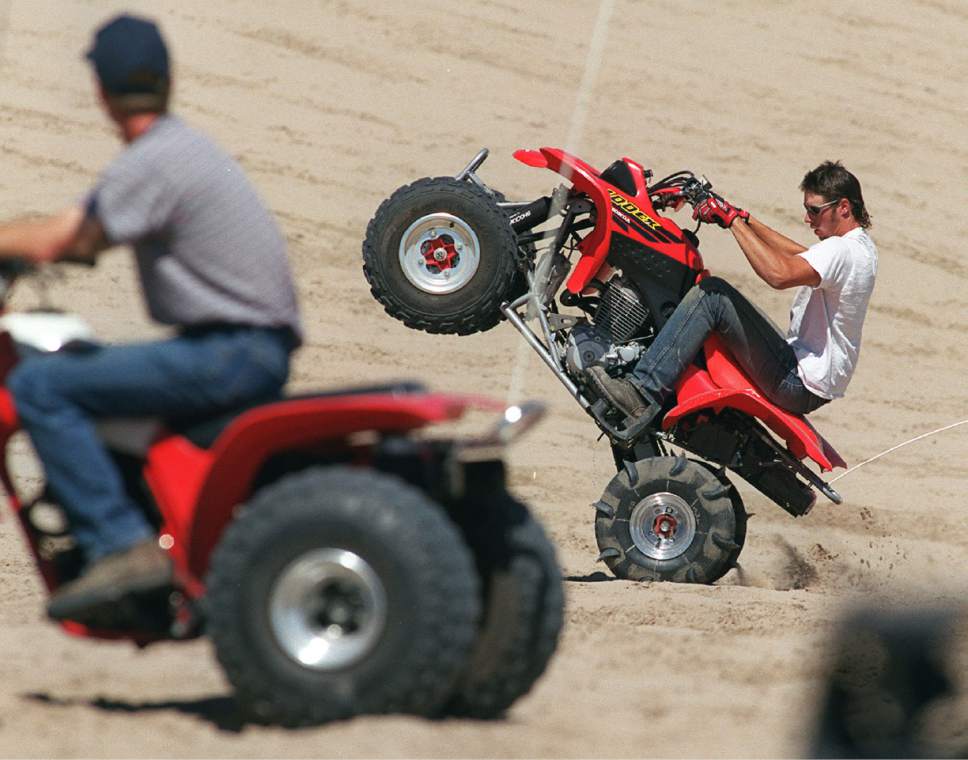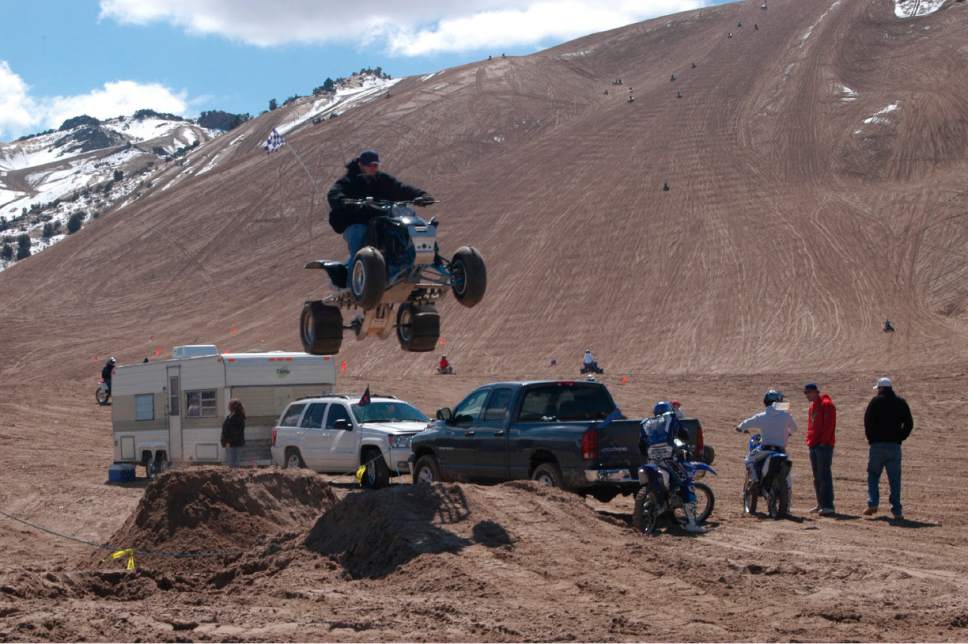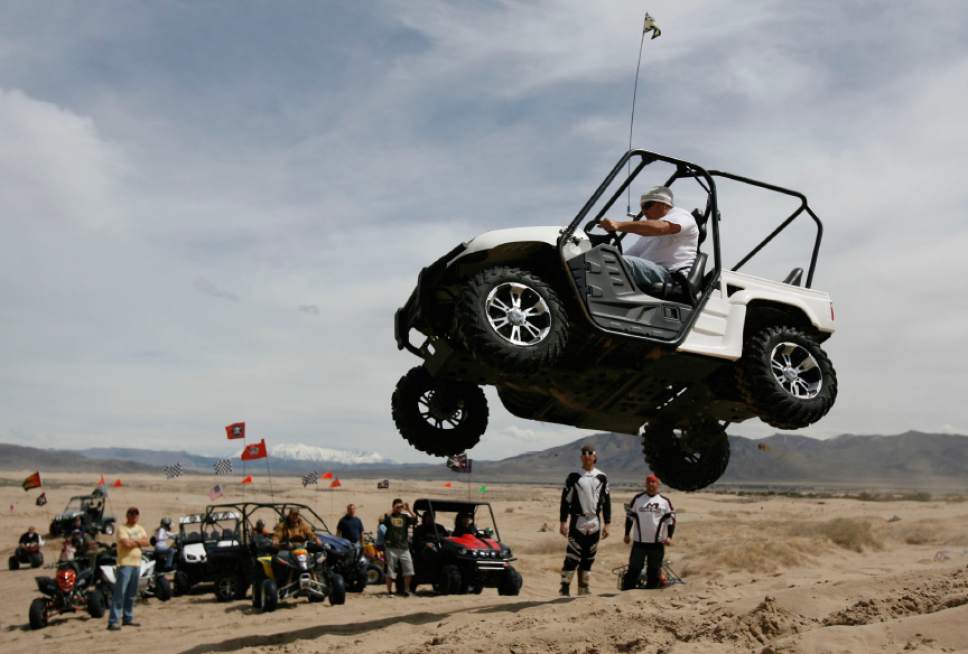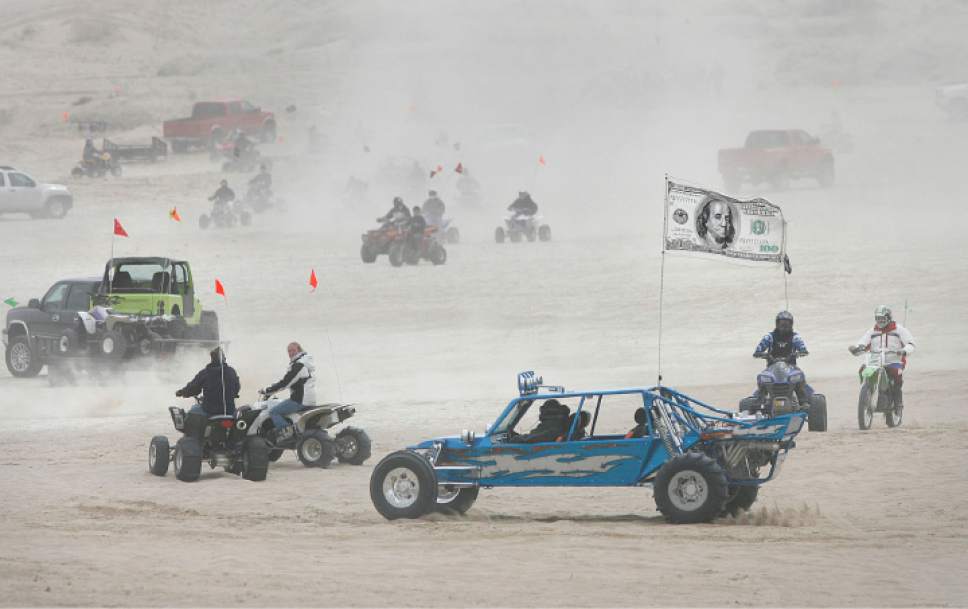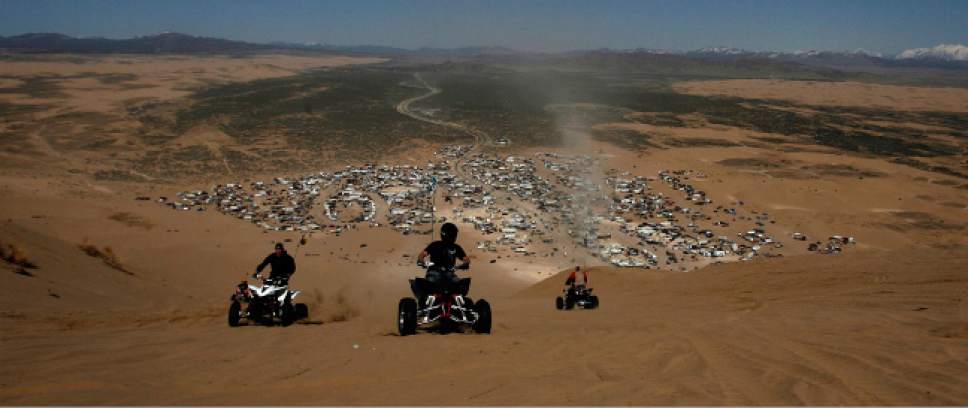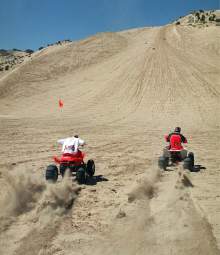This is an archived article that was published on sltrib.com in 2015, and information in the article may be outdated. It is provided only for personal research purposes and may not be reprinted.
Three years after a blistering report from the state auditor questioned management practices of Utah State Parks, some legislators think the agency is ready to grow.
A proposed bill for the 2015 Legislature would transfer control of the popular Little Sahara Recreation Area currently managed by the Bureau of Land Management to Utah State Parks.
Rep. Steve Eliason, R-Sandy, is sponsoring the "Little Sahara State Park Designation" bill and says the the idea first came to him when one of his constituents asked why the annual Utah State Parks pass didn't work at the federal recreation area.
"In general, the Bureau of Land Management is not in the business of operating specific parks, which is what Little Sahara really is," Eliason said. "The state is in the business of operating parks and manages off-highway vehicles across the state, including at Little Sahara already. It seems like it might be a better fit as a state park."
Eliason's idea is just one of several suggested expansions of Utah's system of state parks. State Park managers are focused on a proposal to expand Goblin Valley State Park onto surrounding BLM lands in Emery County. And Congressman Rob Bishop has encouraged county and state leaders to create "wish lists" of federal lands they might take over as part of his Public Lands Initiative — tentatively slated to go before Congress early next year.
And in 2012, Utah lawmakers passed legislation demanding the federal government turn over 30 million acres in public lands by Dec. 31.
Eliason was a co-sponsor of that bill. But he says his Little Sahara legislation simply is meant to standardize management of recreation areas in the state. He notes Coral Pink Sand Dunes State Park in Kane County was created in a similar way.
Originally designated as a BLM recreation area in 1979 to address increasing use in the area, Little Sahara supports more than 200,000 visitors annually, with holiday weekend peaks as high as 30,000.
The area has 40 bathrooms and four campgrounds with 255 improved sites. The BLM has invested about $14 million in infrastructure in the area, including buildings, roads, pipelines and bathrooms. And Little Sahara has a unique feature: two helipads to manage frequent ATV accidents.
State Parks Director Fred Hayes believes the state agency could make a profit on Little Sahara, a 60,000-acre chunk of sageland in Juab County featuring sand dunes, trails and campsites.
"Little Sahara is pretty much developed and we know it is a busy place," Hayes said. "We haven't done the research, but it seems like it could be profitable."
BLM managers declined to comment about the proposed change in management. Utah agency spokeswoman Lisa Reid said it would be inappropriate to talk about pending legislation, particularly since the federal agency had not heard about the proposed bill until contacted by a reporter.
But the BLM did provide details that show the unique challenge Little Sahara might pose to state parks managers.
Accidents are common at the park. Besides the helipads, an AirMed helicopter from the University of Utah stays at the off-highway vehicle recreation area on the busiest weekends, Reid said. In 1998, BLM reported just 25 accidents. But three years later, crews documented 190 accidents — a high.
So far in 2014, medical personnel have responded to 63 accidents at the recreation area.
The state would be responsible for managing those emergency services contracts — and costs — if Eliason's bill is approved.
ATV enthusiasts are not necessarily pushing for the change.
Doug Young visits Little Sahara a couple of times each year. He likes the unique riding opportunities available at the BLM recreation area, but enjoys riding on open public lands for free.
Young, who also serves as president of the Utah ATV Association, says he doesn't see how things will change if management of Little Sahara shifts from state to federal control.
"It's still a government entity," he said.
And Chris Haller, OHV trails program coordinator for Utah State Parks, says riders sometimes ask why the state is not managing Little Sahara.
Utah State Parks is in charge of 80,000 miles of OHV trail systems throughout the state. Eighteen of 43 state parks in Utah provide access to OHV trails from campsites.
"It is a unique situation and we explain that to people. We explain that it is administered by the BLM and a case where we have a mutual partnership," Haller said.
Eliason plans to use the federal Recreation and Public Purposes Act to make the management switch. The Act allows the sale or lease of public lands for recreational or public purposes to state and local governments or qualified nonprofit groups.
A stipulation in the Act only allows for a state to purchase up to 6,400 acres annually. Absorbing 6,400-acre chunks could take 10 years, Eliason said. Or, the state could lease the entire area and operate it "while we continue to transfer parcels under the Act," he said.
For now, Eliason's Little Sahara legislation and the suggested Goblin Valley expansion are the first proposals to shift federal recreation lands under state park control. They probably will not be the last.
Hayes has a wish list of "cool [potential] state parks." They include: Valley of the Gods, run by BLM in San Juan County; Strawberry Reservoir, managed by the U.S. Forest Service in Wasatch County; Flaming Gorge National Recreation Area, managed by the Forest Service in Daggett County; and the Head of Sinbad area on the San Rafael Swell, managed by Emery County BLM staff.
Twitter: @BretPrettyman —
Little Sahara Recreation Area by the numbers
A proposed bill for the 2015 Utah legislative session would transfer management of the popular 60,000-acre off-highway vehicle riding area from Bureau of Land Management control to Utah State Parks.
More than 200,000 • Annual visitors
18,000 to 30,000 • visitors on popular holiday weekends
4 • number of permanent/dedicated employees
40 • bathrooms (23 vault, 17 flush)
255 • campsites (no hookups)
$14 million • federal investment in infrastructure/facilities
$56,000 • restroom cleaning contract
$30,000 • vault toilet pumping contract
$54,000 • garbage pickup contract
190 • number of accidents (minor and critical) in 2001
63 • number of accidents so far in 2014
1979 • year designated
Source: Bureau of Land Management


